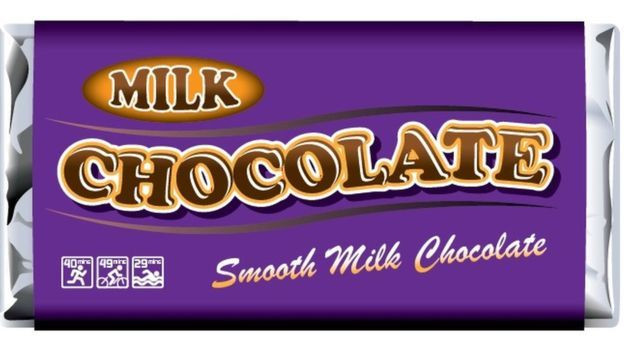UK Considers New Food Labels That Tell Consumers How Long To Run To Burn Calories

Food consumers in the UK may soon see new, potentially upsetting information pictured on the front of their favorite snacks. According to New York Daily News, The Royal Society for Public Health (RSPH) is considering "activity equivalent" icons for food labels to show how many minutes of physical activity consumers need to do in order to burn off calories.
The organization provided a sample chocolate bar package featuring stick figure icons running, swimming, and cycling beside the number of minutes it would take of each to torch the bar's calories. So, in order to burn this particular candy off, a person would have to run for 40 minutes, swim for 29 minutes, or bike for 49 minutes. Another example was a 171-calorie bag of potato chips, which would require 19 minutes of jogging, 13 minutes of swimming, and 23 minutes of cycling to burn off. Estimates are based off the British Heart Foundation Statistics, the Daily News reported.
The RSPH claimed people were three times more likely to engage in physical activity after seeing the activity equivalent labels. It also believes the icons present information in a clearer way than traditional nutrition labels, which have been criticized as "information overload" and "confusing."
"Although nutritional information provided on food and drink packaging has improved, it is evident that it isn't working as well as it could to support the public in making healthy choices," Shirley Cramer, the society’s chief executive, said in a press release. "Activity equivalent calorie labeling provides a simple means of making the calories contained within food and drink more relatable to people’s everyday lives, while also gently reminding consumers of the need to maintain active lifestyles and a healthy weight."
The society reported that, after surveying 2,000 adults, 53 percent of people said the labels would cause them to choose healthier foods, eat smaller portions, or exercise more, while 63 percent said they would simply support the labels.
"Activity equivalent calorie labeling provides a simple means of making the calories contained within food and drink more relatable to people’s everyday lives, while also gently reminding consumers of the need to maintain active lifestyles and a healthy weight," Cramer explained.
The RSPH’s website notes that over two-thirds of adults in the UK are overweight or obese, and that the trend seems to be worsening. They write that food label literacy has been a problem, and that the new labels are meant to attack the issue.



























